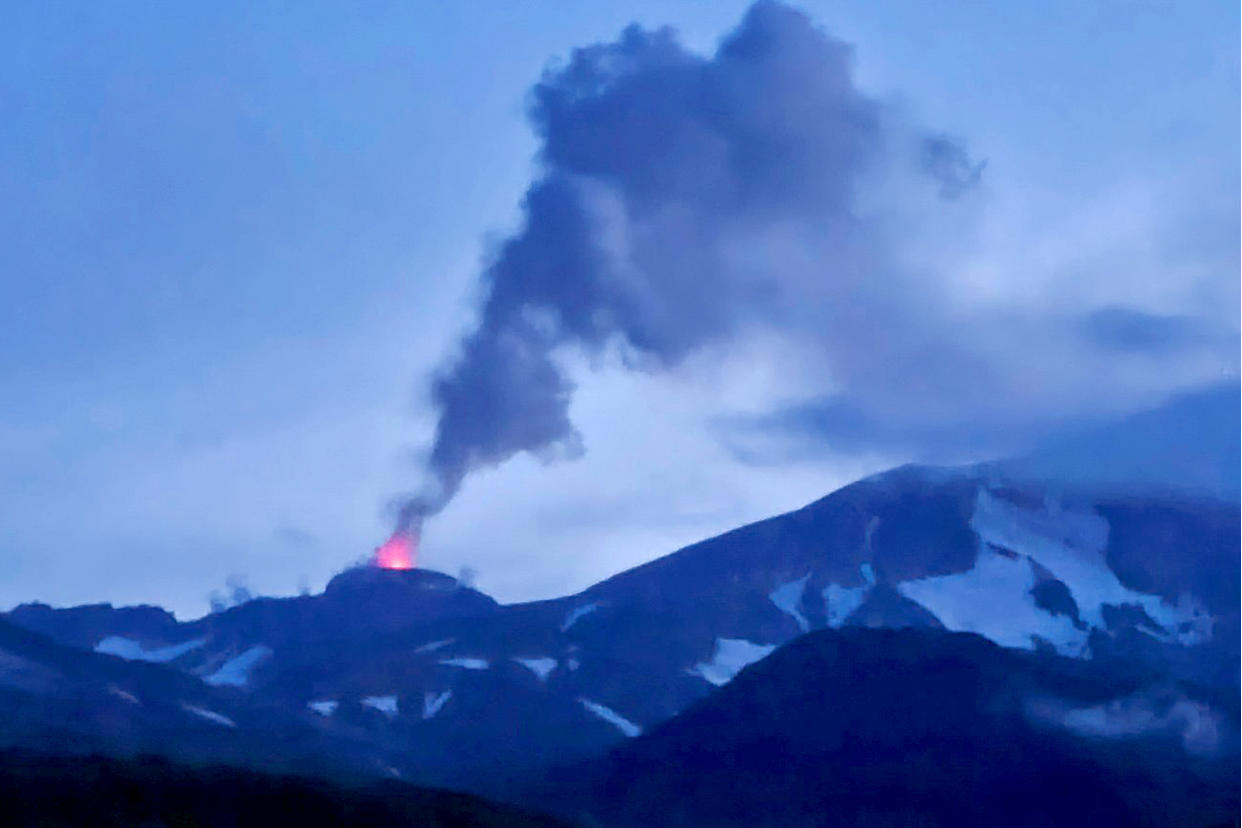Three volcanoes are erupting at the same time in Alaska
Along a remote, roughly 800-mile stretch of Alaska's Aleutian island chain, three volcanoes are erupting at the same time, with at least two spewing low levels of ash and steam.

The simultaneous eruptions have been going on for more than a week but do not currently pose a threat to nearby communities and have not disrupted any air travel so far, according to the Alaska Volcano Observatory.
Still, the volcanic activity has made for a busier-than-usual time across the Aleutian Islands, the vast archipelago that juts westward from the Alaska Peninsula and acts as a border between the North Pacific Ocean and the Bering Sea.
"Alaska has a lot of volcanoes, and we typically see maybe one eruption every year, on average," Matthew Loewen, a research geologist with the Alaska Volcano Observatory, told NBC News. "To have three erupting at once is less common, but it does happen."
Pavlof Volcano, Great Sitkin and Semisopochnoi Volcano all remain under an orange threat level Friday, which signals that eruptions are underway and minor ash emissions have been detected.
Pavlof is located almost 600 miles away from Anchorage. Its nearest city is Cold Bay, a small community that is home to fewer than 120 residents. Closer to the middle of the Aleutian Islands, Great Sitkin lies roughly 25 miles northeast of the city of Adak.
Semisopochnoi Volcano, meanwhile, is on an uninhabited island that forms the easternmost land location in the United States. Though the island is part of the western Aleutian chain, it lies in the Eastern Hemisphere, "well on its way to Russia," Loewen said.
The volcanic islands that make up the so-called Aleutian Arc are part of a horseshoe-shaped zone that can be traced along the rim of the Pacific Ocean where many of the world's earthquakes and volcanic eruptions occur. This region, known as the Pacific "Ring of Fire," is seismically and volcanically active because it is located at the boundaries of several tectonic plates that continually collide and mash together.
While Pavlof, Great Sitkin and Semisopochnoi are in remote parts of the Aleutian Islands, they can produce ash clouds that are hazardous for air travel.
"The Aleutian Arc sits between North America and Asia, so we have a lot of air travel going over and ash is very dangerous for airplanes," Loewen said. "We're always paying attention to ash with our volcanoes in Alaska."
Loewen said it's been at least seven years since three volcanos erupted simultaneously in Alaska, and the recent unrest has kept monitoring campaigns lively at the Alaska Volcano Observatory.
"It's keeping us on our toes," he said. "It’s definitely exciting and a busy time for us up here."
